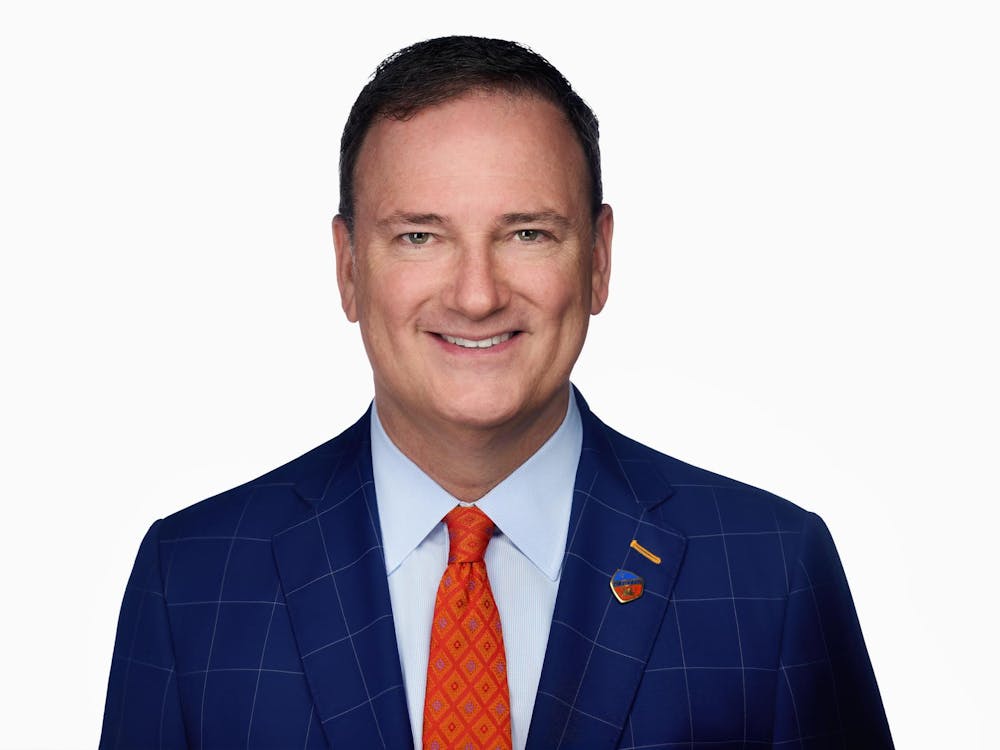Over the past months, Miami has gained a reputation for its drinking behaviors. Niche, a college ranking website, rated Miami as the number three party school in the country in 2017.
This semester in particular, local media outlets and the university held a microscope over student drinking behaviors at Miami. A campus climate survey was released last month aiming to gauge how Miami students drink and think about alcohol, as well as other campus climate concerns.
But pull back the microscope, and how does Miami stack up against other universities' drinking behaviors?
Among four-year public universities, Miami ranked within the top six percent nationally, according to the U.S. Department of Education's Clery Report. The national average for four-year public universities was four violations per every 1000 students.
The Clery Report publishes crime reports from all U.S. colleges, reports mandated by the federal Clery Act, also known as the Campus Security Act. These statistics came from the reported number of on-campus crimes and includes regional campuses as well as community colleges.
Approximately one in 45 Miami students received a liquor violation in 2015. Miami's rate for liquor violations doubled that of four-year public universities in Ohio last year: 22 and 11 violations per 1,000 students respectively, excluding regional campuses that reported zero violations. The national average for four-year public universities was 4.4 violations per 1,000 students.
Among four-year public universities in Ohio, Miami ranked third highest for liquor violations in 2015. Miami fell just behind Ohio State University's (OSU) main and Mansfield campuses, with rates of one in 36 students and one in 44 students receiving liquor violations last year, respectively. Ohio University (OU), the University of Cincinnati (UC) and Bowling Green State University (BGSU) also ranked high for liquor violation rates: one in 55 students (OU), one in 68 students (UC) and one in 90 students (BGSU) had liquor violations last year.
Enjoy what you're reading?
Signup for our newsletter
Only 18 of the 53 public four-year universities in Ohio reported any liquor violations. Among the schools that reported liquor violations, there was an average of 10.8 violations for every 1,000 students. Private schools overall had higher rates of alcohol violations than public schools in Ohio.
These numbers do not tell the whole story, though. They only show who gets caught.
"Those numbers can be influenced by other people, who is reporting them and the policies of the administration," said Dr. Rose Marie Ward, professor of kinesiology and health at Miami. "Our higher numbers could mean that we're more efficient here and finding students and writing them up."
Ward is a member of the Alcohol Coordinating Committee, a group of community, university and student leaders working to assess high-risk alcohol consumption and behaviors, which replaced the Miami University Alcohol Task Force last year. Ward has conducted research on Miami students' drinking behaviors for several years.
High-risk drinking behaviors like binge drinking were consistently more prevalent at Miami than nationally, according to the 2015 Alcohol Task Force report. Where 28 percent of students nationally participate in high-risk drinking behaviors, Miami's rate was 35 percent, or just over one-third of the student population.
The report also found that Miami students reported higher rates of pregaming and alcohol-related blackouts than national averages. Miami students were also less likely to remain non-drinkers once they arrive on campus than all students nationally.
But how different are Miami's high-risk drinking behaviors compared to other large and mid-size Ohio universities? According to students from around Ohio, not that different.
"I have visited a few other universities and everyone seems to have a similar drinking culture," said Chase Frazee, a junior at OSU.
On game day at OSU, students will wake up at 6 a.m. to start pre-gaming for the 12 p.m. football game. Frazee, a member of a fraternity at OSU, said house parties and bars are the most common places students go to drink.
"Drinking is especially accepted and encouraged among Greek life students," said Frazee.
Victoria Walsh, a member of a sorority at BGSU, said although she has not been to Miami, she had heard from friends that drinking habits are similar to those at BGSU. Parties are often thrown on the weekend by fraternities and sports teams, and students at BGSU often go to house parties before going to the bars, which open their doors to students 18 to 20 years old with a $5 cover, Walsh said.
"We have dollar drink nights offered at our bars Tuesday, Wednesday and Thursday. So, our drinking culture is pretty strong whether it's the weekend or not. Almost as many people go out on Thursdays as they would on the weekend," said Walsh.
"At least with most people I know, binge drinking tends to be pretty common," said Ben Kehres, a student at UC. "I would say not as many people here drink as often as kids from Miami."
UC sits in the heart of Clifton, a community that is a five-minute drive from downtown Cincinnati. Unlike at UC, the bars near Miami tend to be more crowded, Kehres said, who has visited friends at Miami and OSU.
"People tend to be a bit more cautious about how much they drink here if they have to walk home because of where we are," said Kehres of going to bars in Cincinnati.
Similar to Miami in its remoteness, OU also ranked in the top 10 percent nationally for the highest rate of liquor violations. Known for its boozy Halloween parties, each street hosts a block party each weekend after spring break, known as "fest season" in Athens. Emily Makar, junior at OU, thinks the drinking culture at her school is similar to that at Miami.
"Students will make anything a fest," said Makar. "Athens County had a water main break this year, and people went to the bars, calling it NoH2OFest."
"I think no matter where you're at, there's going to be an underlying culture of binge drinking," said Kehres.



